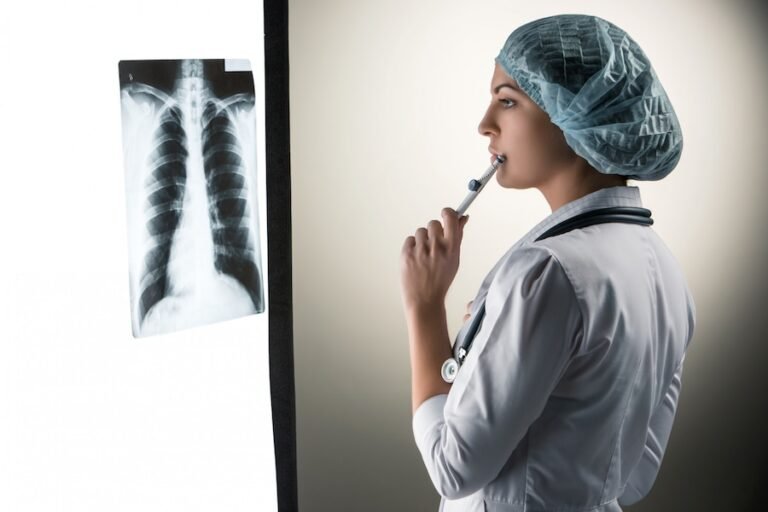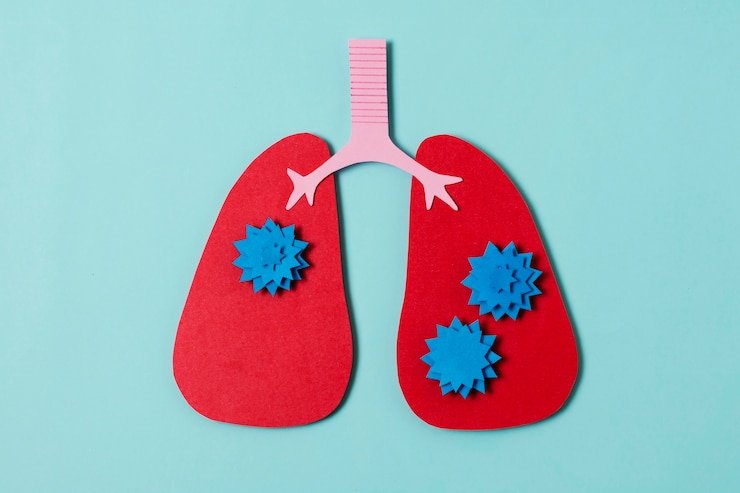Understanding Lung Biopsy: Procedure, Uses, and Considerations.
Lung biopsy is a diagnostic procedure used to obtain tissue samples from the lungs for examination under a microscope. It plays a crucial role in the diagnosis and management of various lung conditions, including cancer, infections, and interstitial lung diseases. In this article, we will delve into the procedure of lung biopsy, its uses, different techniques, and considerations for patients undergoing this important diagnostic test.
To Know More About It Please Click Here
Procedure of Lung Biopsy
Lung biopsy may be performed through different techniques, depending on the location of the abnormality and the patient’s overall health. The most common methods include:
- Percutaneous Needle Biopsy: This minimally invasive technique involves inserting a thin needle through the chest wall into the lung to obtain tissue samples. It is typically guided by imaging techniques such as computed tomography (CT) or ultrasound to ensure accuracy and safety.
- Bronchoscopy: In this procedure, a flexible tube with a camera (bronchoscope) is inserted through the mouth or nose into the airways to reach the lungs. Biopsy forceps or brushes are then passed through the bronchoscope to collect tissue samples from the lung lesions or airway linings.
- Surgical Biopsy: In cases where percutaneous or bronchoscopic biopsy is not feasible or sufficient, a surgical biopsy may be performed. This involves making an incision in the chest wall (thoracotomy) or using minimally invasive techniques such as video-assisted thoracoscopic surgery (VATS) to access the lungs and obtain tissue samples.
Uses of Lung Biopsy:
Lung biopsy is performed to diagnose various lung conditions and guide treatment decisions. Some common indications for lung biopsy include:
- Diagnosis of Lung Cancer: Lung biopsy is essential for confirming the presence of lung cancer, determining the type of cancer (e.g., non-small cell lung cancer, small cell lung cancer), and assessing tumor characteristics to guide treatment planning.
- Evaluation of Lung Nodules: Lung nodules or masses detected on imaging studies such as chest X-rays or CT scans may require biopsy to determine whether they are benign or malignant. Biopsy helps differentiate between cancerous tumors, infections, or benign lesions.
- Diagnosis of Interstitial Lung Diseases: Lung biopsy is often used to diagnose interstitial lung diseases, a group of disorders characterized by inflammation and scarring of the lung tissue. Biopsy helps identify the underlying cause of interstitial lung diseases, such as idiopathic pulmonary fibrosis, sarcoidosis, or connective tissue diseases.
- Detection of Lung Infections: Lung biopsy may be indicated for diagnosing infections such as tuberculosis, fungal pneumonia, or atypical bacterial infections that are not responsive to standard treatments or require definitive diagnosis for appropriate management.
Considerations for Patients
Before undergoing lung biopsy, patients should discuss the procedure with their healthcare provider and understand the risks, benefits, and alternatives. Some important considerations include:
- Risks and Complications: Although lung biopsy is generally considered safe, it carries potential risks such as bleeding, infection, pneumothorax (collapsed lung), or damage to surrounding structures. Patients should be aware of these risks and follow post-procedure instructions carefully to minimize complications.
- Preparation: Depending on the biopsy technique, patients may need to undergo certain preparations, such as fasting before the procedure or stopping blood-thinning medications to reduce the risk of bleeding. They should also inform their healthcare provider about any allergies, medical conditions, or medications they are taking.
- Recovery: Recovery following lung biopsy varies depending on the technique used and the patient’s overall health. Patients undergoing percutaneous or bronchoscopic biopsy may experience mild discomfort or soreness at the biopsy site, which typically resolves within a few days. Surgical biopsy may require a longer recovery period and post-operative care.
- Follow-Up: After lung biopsy, patients will receive pathology results indicating the findings of the tissue samples. These results will guide further treatment decisions, such as surgery, chemotherapy, radiation therapy, or antimicrobial therapy, depending on the diagnosis.
To Know More About It Please Click Here
Conclusion
Lung biopsy is a valuable diagnostic tool used to obtain tissue samples from the lungs for examination and analysis. It plays a critical role in the diagnosis and management of various lung conditions, including cancer, infections, and interstitial lung diseases. By understanding the procedure, indications, and considerations associated with lung biopsy, patients and healthcare providers can make informed decisions and achieve optimal outcomes in the diagnosis and treatment of lung disorders.








